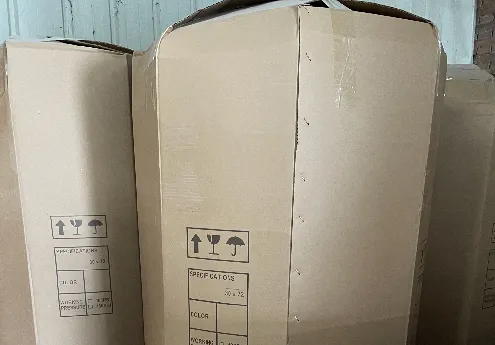loading...
- No. 9, Xingyuan South Street, Dongwaihuan Road, Zaoqiang County, Hengshui, Hebei, China
- admin@zjcomposites.com
- +86 15097380338
- Welcome to visit our website!
Enhancing Structural Applications with FRP Pultruded Profiles in Modern Construction
Understanding FRP Pultruded Profiles Advantages and Applications
Pultruded Fiber Reinforced Polymer (FRP) profiles are revolutionizing the materials industry thanks to their unique combination of properties. Combining high strength, lightweight, and corrosion resistance, these profiles are increasingly being used in a variety of applications, from construction to aerospace.
What is FRP?
Fiber Reinforced Polymer (FRP) is a composite material made from a polymer matrix reinforced with fibers. The most common fibers used include glass, carbon, and aramid. The pultrusion process involves continuously pulling these fibers through a resin bath and then through a heated die, which cures the resin, creating strong, rigid profiles. The result is a highly durable and versatile material that can be shaped into various forms.
Advantages of FRP Pultruded Profiles
1. High Strength-to-Weight Ratio One of the most significant advantages of FRP is its high strength-to-weight ratio. This makes it an ideal choice in applications where reducing weight is critical without compromising strength. For example, in the aerospace industry, where every kilogram counts, FRP pultruded profiles offer a lightweight alternative to traditional materials like steel or aluminum.
2. Corrosion Resistance Unlike metals, FRP does not corrode, which makes it suitable for environments that are prone to chemical exposure, such as wastewater treatment plants and marine applications. This longevity significantly reduces maintenance costs and extends the lifespan of products made from FRP.
3. Design Flexibility The pultrusion process allows for a variety of shapes and sizes, offering designers flexibility to create customized solutions for specific applications. This versatility enables FRP profiles to be used in a wide range of structural and non-structural applications.
4. Thermal and Electrical Insulation FRP profiles possess excellent thermal insulation properties, making them suitable for applications in extreme temperature environments. Additionally, FRP does not conduct electricity, offering safety benefits in electrical installations.
frp pultruded profiles

5. Lightweight Compared to traditional materials, FRP pultruded profiles are significantly lighter, which not only eases handling and installation but also reduces the load on supporting structures, leading to potential savings in the overall design and construction.
Applications of FRP Pultruded Profiles
1. Construction and Infrastructure FRP pultruded profiles are widely used in construction for making beams, columns, and decking. Their lightweight nature and resistance to corrosion make them suitable for pedestrian bridges, walkways, and staircases, especially in marine environments.
2. Transportation In the transportation industry, FRP profiles are used for manufacturing parts for vehicles, trains, and aircraft. Their low weight helps improve fuel efficiency while still maintaining structural integrity.
3. Electrical and Telecommunications The non-conductive nature of FRP makes it ideal for use in electrical applications such as poles, conduits, and support structures for telecommunications equipment. It minimizes the risks associated with electrical hazards and reduces the impact of environmental conditions on cables and wires.
4. Water and Wastewater Management The resistance to corrosion allows FRP pultruded profiles to be used in water treatment facilities, piping systems, and containment structures. This is crucial in environments where metals would quickly degrade.
5. Sports and Recreation FRP is used in recreational equipment such as sports flooring, playgrounds, and pool decks. Their slip-resistant surface and durability ensure safety and longevity.
Conclusion
FRP pultruded profiles are transforming how industries approach design and construction. The amalgamation of lightweight durability, corrosion resistance, and design flexibility makes them a superior choice for various applications. As technology advances and the demand for sustainable and efficient materials increases, FRP will likely play an even more pivotal role in future innovations across multiple sectors. Understanding and leveraging the benefits of FRP pultruded profiles will not only enhance product quality but also contribute to cost-effectiveness and sustainability in modern engineering and design.
-
The Benefits and Uses of Covered Grating SolutionsNewsMay.12,2025
-
SMC Panel Tanks: The Best Choice for Modern Water StorageNewsMay.12,2025
-
Sectional Water Tanks for Every NeedNewsMay.12,2025
-
FRP Profiles: A Strong Solution for Modern ApplicationsNewsMay.12,2025
-
FRP Pressure Tanks and VesselsNewsMay.12,2025
-
All You Need to Know About FRP Grating SolutionsNewsMay.12,2025
-
Why FRP Grating Panels are the Best Choice for Your Industrial NeedsNewsMay.09,2025
